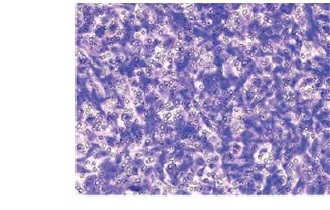Current issue
Archive
Manuscripts accepted
About the Journal
Editorial office
Editorial board
Section Editors
Abstracting and indexing
Subscription
Contact
Ethical standards and procedures
Most read articles
Instructions for authors
Article Processing Charge (APC)
Regulations of paying article processing charge (APC)
HEPATOLOGY / BASIC RESEARCH
MiR-93 suppresses cell proliferation and invasion by targeting ZNF322 in human hepatocellular carcinoma
1
The Second Affiliated Hospital of Xi’an Jiaotong University, China
2
Department of Anesthesiology, Weinan Central Hospital, China
Submission date: 2019-01-08
Final revision date: 2019-02-18
Acceptance date: 2019-03-05
Online publication date: 2021-03-19
KEYWORDS
TOPICS
ABSTRACT
Introduction:
This study aimed to investigate the biological role of microRNA 93 (miR-93), a novel tumor-related miRNA, in human hepatocellular carcinoma (HCC) and elucidate the potential molecular mechanisms involved.
Material and methods:
Quantitative real-time polymerase chain reaction (qRT-PCR) was conducted to determine the expression of miR-93 in HCC tissues and cell lines. The log-rank test and Kaplan-Meier survival analysis were performed to evaluate the relationship between miR-93 expression and overall survival. MTT assay, colony formation assay, Transwell migration and invasion assays were carried out to examine cell proliferation, colony formation, migration and invasion, respectively. Murine xenograft models were established to investigate the effect of miR-93 on tumor growth in vivo. TargetScan online software was applied to predict the potential target of miR-93. Luciferase reporter assays were used to validate the direct binding of miR-93 and its putative target.
Results:
We found that miR-93 was significantly down-regulated in HCC tissues and cell lines. Patients with decreased miR-93 expression had significantly shorter overall survival. Functional investigations demonstrated that miR-93 over-expression suppressed HCC cell proliferation, weakened clonogenic ability, and slowed down cell migration and invasion, whereas miR-93 depletion facilitated HCC cell proliferation, colony formation, cell migration and invasion. MiR-93 over-expression retarded tumor growth in vivo. Luciferase reporter assay and rescue assay revealed that zinc finger protein 322 (ZNF322) was a direct target of miR-93 and mediated the inhibitory effects of miR-93 on HCC cell proliferation and motility.
Conclusions:
Our data may provide some evidence for the miR-93/ZNF322 axis as a candidate therapeutic target for HCC.
This study aimed to investigate the biological role of microRNA 93 (miR-93), a novel tumor-related miRNA, in human hepatocellular carcinoma (HCC) and elucidate the potential molecular mechanisms involved.
Material and methods:
Quantitative real-time polymerase chain reaction (qRT-PCR) was conducted to determine the expression of miR-93 in HCC tissues and cell lines. The log-rank test and Kaplan-Meier survival analysis were performed to evaluate the relationship between miR-93 expression and overall survival. MTT assay, colony formation assay, Transwell migration and invasion assays were carried out to examine cell proliferation, colony formation, migration and invasion, respectively. Murine xenograft models were established to investigate the effect of miR-93 on tumor growth in vivo. TargetScan online software was applied to predict the potential target of miR-93. Luciferase reporter assays were used to validate the direct binding of miR-93 and its putative target.
Results:
We found that miR-93 was significantly down-regulated in HCC tissues and cell lines. Patients with decreased miR-93 expression had significantly shorter overall survival. Functional investigations demonstrated that miR-93 over-expression suppressed HCC cell proliferation, weakened clonogenic ability, and slowed down cell migration and invasion, whereas miR-93 depletion facilitated HCC cell proliferation, colony formation, cell migration and invasion. MiR-93 over-expression retarded tumor growth in vivo. Luciferase reporter assay and rescue assay revealed that zinc finger protein 322 (ZNF322) was a direct target of miR-93 and mediated the inhibitory effects of miR-93 on HCC cell proliferation and motility.
Conclusions:
Our data may provide some evidence for the miR-93/ZNF322 axis as a candidate therapeutic target for HCC.
Share
RELATED ARTICLE
We process personal data collected when visiting the website. The function of obtaining information about users and their behavior is carried out by voluntarily entered information in forms and saving cookies in end devices. Data, including cookies, are used to provide services, improve the user experience and to analyze the traffic in accordance with the Privacy policy. Data are also collected and processed by Google Analytics tool (more).
You can change cookies settings in your browser. Restricted use of cookies in the browser configuration may affect some functionalities of the website.
You can change cookies settings in your browser. Restricted use of cookies in the browser configuration may affect some functionalities of the website.



